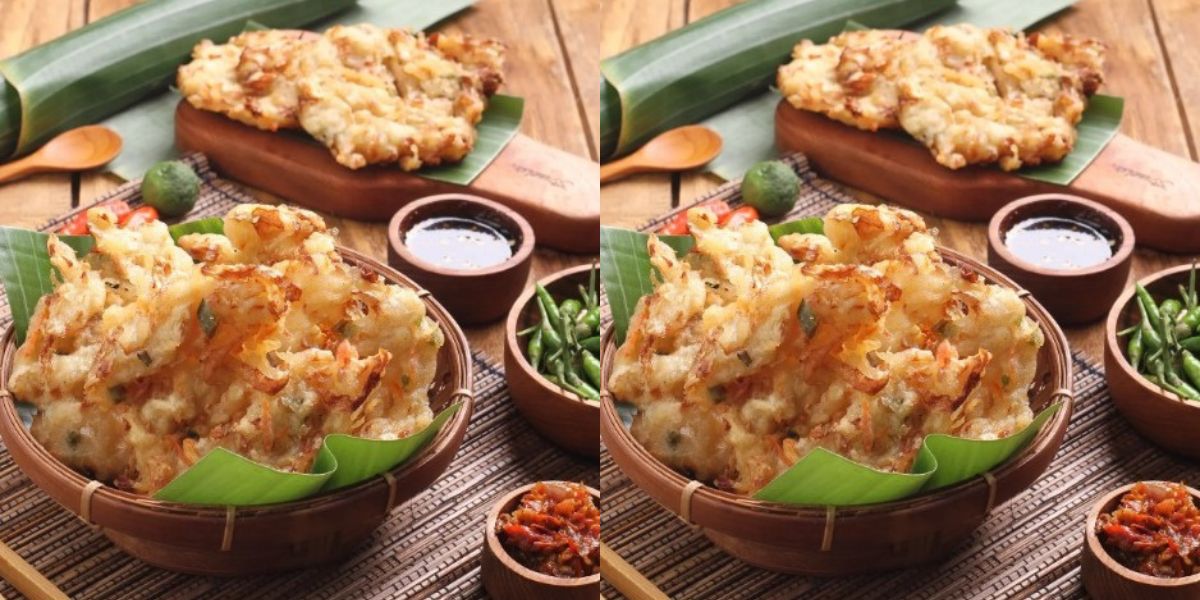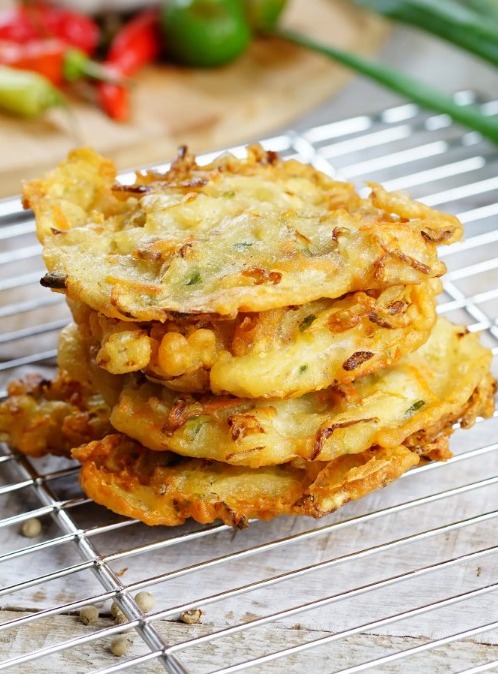Just Add 1 Kitchen Ingredient, Bakwan Can Be Crispy and Long Lasting
Vegetable bakwan is an interesting and practical option for culinary enthusiasts who prioritize deliciousness and comfort in every dish.

Kapanlagi.com - Cabbage fritters, a popular and delicious food among Indonesian food enthusiasts, are known for their fresh and crispy cabbage taste and unique crispy texture. This harmony is perfectly achieved through the combination of flour, creating an attraction to the taste buds. The critical use of the right recipe and ingredients in making cabbage fritters cannot be ignored to achieve a satisfying end result, especially in terms of crispiness without excessive greasiness.
To achieve the perfect taste of cabbage fritters, the selection of quality ingredients and the right proportions are the main keys to success. Ingredients such as flour, water, eggs, and various spices must be carefully processed to form a consistent and easily processed dough. In addition, the success of non-greasy cabbage fritters greatly depends on the proper frying technique, achieving a crispy outer texture while maintaining tenderness on the inside.
Let's find out more information, quoted from various sources on Tuesday (16/01/2024).

Illustration of Kitchen Ingredients (Source: Freepik)

Illustration of the Process of Making Bakwan (Source: Freepik)

Fried Bakwan (Source: Fimela.com)
Food made from a mixture of wheat flour and various vegetables is believed to originate from China, taken from the term 'Bakwan' which is related to 'Bak' which means meat. In the past, it is known that bakwan originally consisted of meat and flour which were then fried.
There is a view that using the term bakwan for fried vegetable dough is a misunderstanding, because in essence, bakwan is a term that refers to meatballs. Therefore, it is not surprising that there are various fried variations in the meatball menu.
Based on the data listed in the Indonesian Food Composition Table released by the Indonesian Nutritionist Association in 2009, the calorie content in 100 grams of bakwan reaches 280 calories.
Bakwan batter can be stored in the refrigerator to prevent spoilage. However, some people experience changes in the texture of the bakwan batter when stored in the fridge.
With just one piece of fried bakwan, the fat content can reach 75 percent.
Bakwan sayur is also known as ote-ote among the people of East Java.
In Malang, East Java, people call bakwan weci or heci. Not only in Malang, but also in Madiun, Lumajang, Tulungagung, and several other cities in East Java, bakwan is also called weci/heci.
Quoted from Kompas TV, bakwan Pontianak is made from a mixture of various types of flour, involving wheat flour, rice flour, and cornstarch.
(kpl/saa)
Cobain For You Page (FYP) Yang kamu suka ada di sini,
lihat isinya
Vegetable bakwan is an interesting and practical option for culinary enthusiasts who prioritize deliciousness and comfort in every dish.
Apply a healthy lifestyle as a preventive measure to reduce the risk of increased stomach acid.
Guava leaves can be an interesting option as a natural solution to manage cholesterol levels.
Reducing the possibility of risks and avoiding the occurrence of serious problems can be done by taking preventive measures, one of which is reducing the side effects of medication and implementing a healthy lifestyle.
KH Maimun Zubair (Mbah Moen) is known as a charismatic kiai, scholar, and politician from Indonesia. Here is the profile and career journey of KH Maimun Zubair (Mbah Moen).
Here are some pictures of Fitri Carlina accompanying her husband going home to Doha, Qatar.
Aby Respati, a transgender person whose journey to conversion went viral and is now married to his partner.
Gading Marten and Gempi always appear compact and fun when spending time together.
Nia Ramadhani has a very youthful face, making her look more like a sibling when she is with her eldest daughter, Mikhayla
Selvi Ananda looks beautiful attending the launch event of High-End Brands Indonesia (HEB) by Shopee, wearing local-made fashion
Five lifestyle patterns that can help maintain controlled cholesterol levels without relying on medications.
Timmy Habibie passed away on Sunday (21/01/2024) due to complications